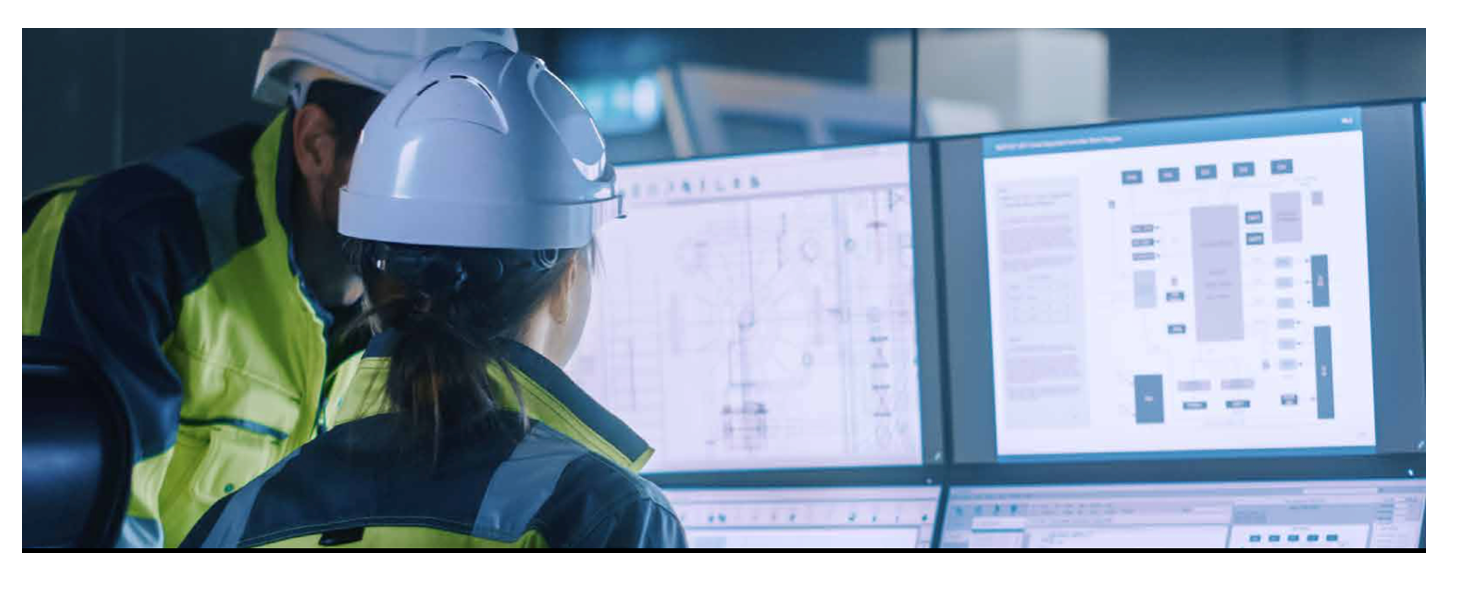SEC595: Applied Data Science and AI/Machine Learning for Cybersecurity Professionals


Experience SANS training through course previews.
Learn MoreLet us help.
Contact usBecome a member for instant access to our free resources.
Sign UpWe're here to help.
Contact UsWelcome to the second of our multi-part series on threat hunting for industrial control system (ICS) and operational technology (OT) environments.

PART 1 – In our first ICS Threat Hunting blog in this series, ICS Threat Hunting: “They're Shootin’ at the Lights!” – PART 1, we focused on extending traditional threat hunting into OT/ICS environments. We referenced the 1988 film Die Hard and its key characters Sgt. Al Powell (a threat hunter) and Deputy Police Chief Dwayne T. Robinson (a non-threat hunter), and we walked through:
In this PART 2 of the blog series we will:
And in PART 3 of the series, soon to come, we will:
More to come!

IT and ICS systems have different missions, objectives, and impacts during an incident. They also have different assets, including but not limited to embedded operating systems and engineering devices speaking non-traditional industrial protocols. Adversaries targeting ICS must use different attack tactics and techniques for access, execution, collection, and persistence in order to degrade safety, manipulate control, and damage physical engineering assets or property.
Thus, while ICS hunting shares the core attributes of traditional hunting such as hypothesis-driven efforts, it caters to the industrial environments based on ICS-specific engineering assets and different ICS adversary tradecraft.
If you’ve just started your journey into threat hunting, there is value to focusing first on your system risk surfaces using attack trees. An attack tree is a list of potentially logical attack vectors that an attacker could string together to achieve an ICS impact. By just jotting them down in a paper-based exercise you can use attack trees to help understand where there may be a need for security controls and prioritize vulnerability management efforts.
As an ICS security program matures, attack trees, and ultimately threat hunt hypotheses, are best driven by known security gaps in the control network or sector-specific threat intelligence.

A hypothesis-driven hunt is one of the most popular of several threat hunting methodologies. Threat hunters can use Cyber Threat Intelligence (CTI) to generate attack hypotheses, then sift through available security data sources to stop an attack in progress or identify ways to strengthen a security program before incidents occur. ICS defenders will do well to leverage both operational and tactical CTI for hunts, including indicators of compromise and adversary TTPs. We listed several freely available threat intelligence sources in ICS Threat Hunting: “They're Shootin’ at the Lights!” - PART 1.
Operational threat intelligence includes indicators of compromise (IoCs) in the form of malicious IP addresses, hashes of malicious files, and other technical signatures associated with evolving and ongoing attack campaigns. IoCs are commonly used to scope how far a compromise has spread. Operational indicators may also be ingested into security tools to alert security teams when a threat on an endpoint or in the network is detected. IoCs have their limitations, however. They are useful for only a limited time because it is easy for adversaries to quickly change them. For example, in terms of malware file hashes, adversaries can slightly change, recompile, and redistribute malware executables to avoid detection, as a changed file will have a different associated digital hash. IP addresses used as part of an advisory attack infrastructure, as in the case of a C2 (Command and Control server), can change as the adversary switches its attack infrastructure, using different source/destination IP addresses associated with different Internet IP blocks as part of its campaign (a technique also known as “Fast flux”). Thus, IoCs are valuable for scoping an environment primarily for point-in-time checks, but their value can decrease in usefulness over the duration of an attack campaign.
Tactical threat intelligence and adversary tradecraft intelligence focus on the behaviors of the threat activity groups – that is, the patterns of their attacks. An example of such an attack pattern and associated TTPs occurs when an adversary focuses on compromising the IT network using malware to gain access and obtain an initial foothold inside the target organization. The adversary then attempts to harvest cached credentials in IT that may be shared between the IT and ICS networks and use them through trusted Active Directory authentication infrastructure. The adversary then tries to pivot from IT into the ICS, which could be done through a trusted ICS asset such as the Data Historian system. Further attacks might target Human Machine Interface (HMI) for direct interaction with the control system, emulating an operator (with malicious purposes), as there is no need for malware code to have an impact at that point. TTPs are more difficult for adversaries to change than IoCs, and many TTPs are generally observable in multiple ICS attack campaigns. For a defender, this means that fixing gaps found through ICS threat hunts can defend against multiple attacks. Adversaries are continuing to evolve, though, even with their tradecraft. Since threat hunting can never be fully automated in IT or ICS, it remains effective as a human-powered repeatable process to generate hypotheses and ingest, comprehend, and apply hunting techniques and protections against adversary patterns. However, threat hunting needs to leverage tools to help automate parts of the hunt, such as collecting, correlating or scoping data, or other key activities. So, by using this type of threat intelligence, defenders can employ IoC scoping and TTPs to map adversary patterns in order to verify if adversary attack patterns are effective if part of an attack against their networks and critical ICS assets.
It is common for ICS threat hunts to include these control system assets when using IoC scoping and/or TTP attack mapping. These assets are critical for ICS operations, and threat intelligence indicates adversaries can commonly target them to cause safety or operational damage. Let’s walk through what these assets are and how they can be targeted or abused for control system impacts.

To prepare a threat hunt, we must build a threat hunt package that targets the right data sources – which may or may not be currently collected. It will come as no surprise that for effective ICS hunts, it is important to have event data from controllers in the field, engineering applications such as the HMI, the data historian, and network traffic to and from identified critical ICS assets.
Network session data and firewall access control events should be obtained. Network events can be in the form of the 5-tuple or full-network package captures. Focusing on 5-tuple collection consists of capturing the source and destination IP addresses, source and destination ports, and protocol observed in network communications. Capturing the 5-tuple data requires far less storage requirements than full-packet captures. Full-packet captures consist of the entire packet, including the 5-tuple data as well as the full-packet payload (such as the query and response data, industrial commands, function codes, and other artifacts). Even files in the packet payload may be extracted for analysis during a hunt, or even in incident response cases. Files such as malware samples can be extracted, for example. Full-packet capture does consume significantly more storage space than just capturing 5-tuple data.
The key data sources in control networks that are needed to support threat hunting and should be regularly monitoring for security events include:
Endpoints in ICS are not just traditional operating systems running on OT assets. In fact, many assets in ICS are not running traditional operating systems. This can make obtaining the right data sources challenging. Where practical, capture registry key data, process execution data, command line arguments, and file attributes. Beyond traditional endpoints, advances in controllers and other Intelligent Electronic Devices in recent years allow forwarding event logs from engineering assets to a syslog server or SIEM for review by ICS security teams.
The key data sources for endpoint devices in ICS that are needed to support threat hunting and should be regularly monitored for security events include:
A SIEM would be ideal to help automate collection and searching in these cases.
You can use this table as a guide to help track and organize assets, data types, storage capabilities, and data source retention for current states and requirements. When we start hunting, we will need to prioritize data sources with lower data retention schedules. The example in the table is of a power system.
ICS Site | Control Center | Electric Generation Facility | Transmission Substation | Combustion Turbine site |
Asset | HMI | PLCs | RTUs, Protection Control Relays | Network Appliance or Test Access Point |
Data Type | Windows Host logs HMI Application Logs | Syslog | Proprietary | Standard full-packet capture |
Data Storage Location | Local on device | ICS SIEM | Local to device | Local to device |
Data Storage Retention | 60 days | 120 days | 7 days | 30 days |

As an aid to prepare a hunt, an ICS threat hunt package template, as shown in the table below, will help us outline the purpose and scope of a hunt, including which ICS assets and types of assets to include, the teams that may be required to help pull data or enable access, types of threat intel leveraged, and the hypothesis to be tested. Having a hunt package documented like this will streamline execution and allow you to track your efforts and related outcomes.
Threat Hunt Element | Description |
Purpose | The reason for the threat hunt. |
Hypothesis | The generated or suggested events that could occur in your ICS – driven by an already identified gap, suggested by threat intelligence, seen observed in your sector, etc. |
Scope | Assets and network segments considered part of the hunt. |
Related Data Sources | Identified data sources that could be endpoint-based and/or network-based. |
ICS Assets | Identified assets that could be, or have been, observed as being targeted as part of an attack in ICS. |
Type - Adversary TTP and/or IoC Sweep | List of identified TTPs/IoCs to be verified or swept for. |
Actions | Actions to be carried out to sweep for IoCs and/or verify security controls to detect TTPs – the security control to be used, other tools to help automate collection or event correlation. |
Teams | Engineering staff, operators, ICS SOC analyst, ICS SOC lead, engineering safety lead, etc. |
Now that we have a basic understanding of the benefits of a threat hunt, some critical/targeting ICS assets, what types of intel to leverage, and key network and endpoint data sources, we can start building a threat hunt package for the industrial environment and execute it. In PART 3 of this blog series, we will do just that! We will lay out, select, and execute several threat hunt packages relevant to all ICS critical infrastructure sectors.
Until then, it is a good practice to check the above data sources for your ICS environment(s) to ensure that data from them are being collected, or that they are on the list of data sources from which to start collecting for regular ICS SOC monitoring and ICS hunts.
SANS Cyber Security Central: November 2021 Online
Review Dean’s ICS Community Contributions and Bio here.
https://ics-community.sans.org/signup


Dean Parsons, CEO of ICS Defense Force, teaches ICS515 and co-authors ICS418, emphasizing ICS-specific detection, incident response, and security programs that support OT operations—aligning practitioners and leaders on clear, defensible action.
Read more about Dean Parsons